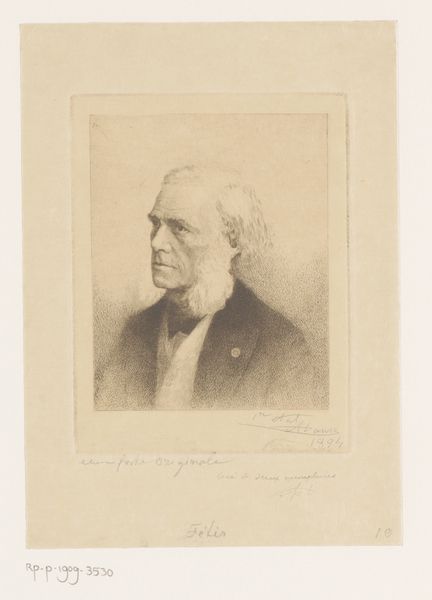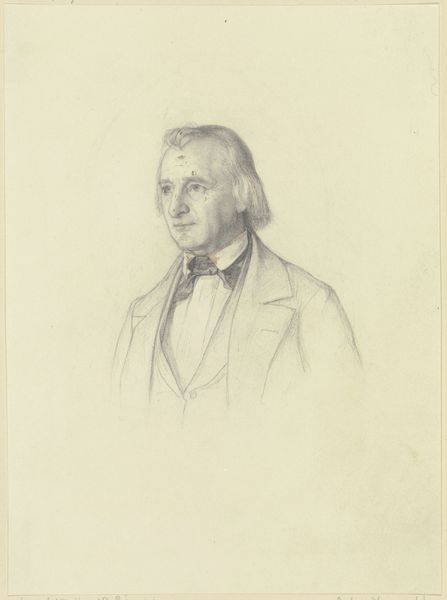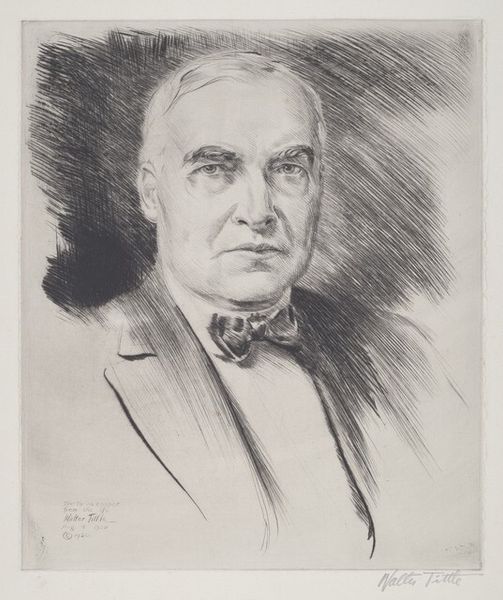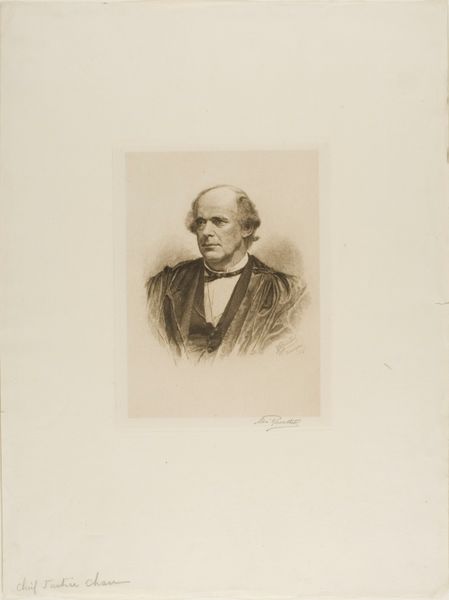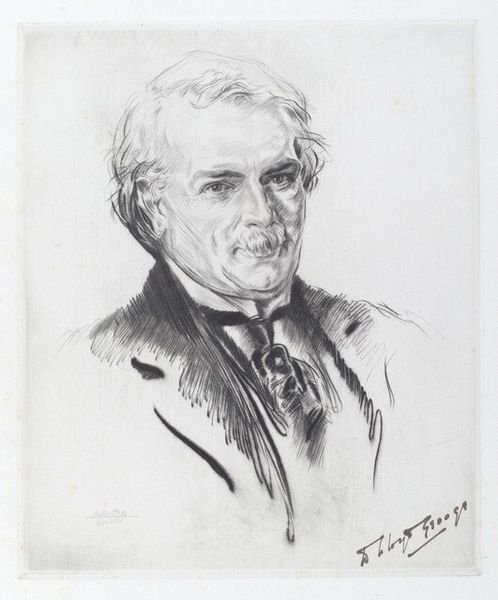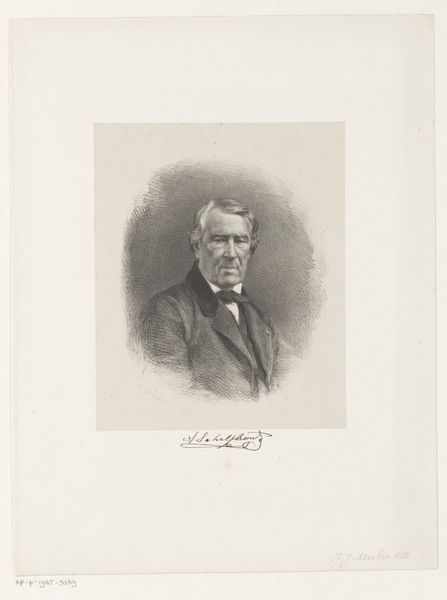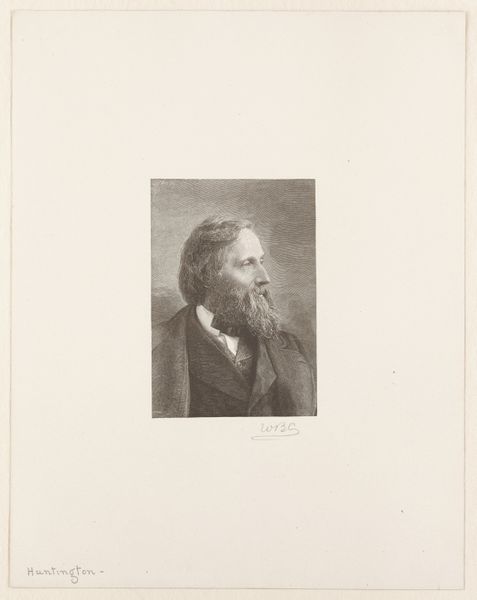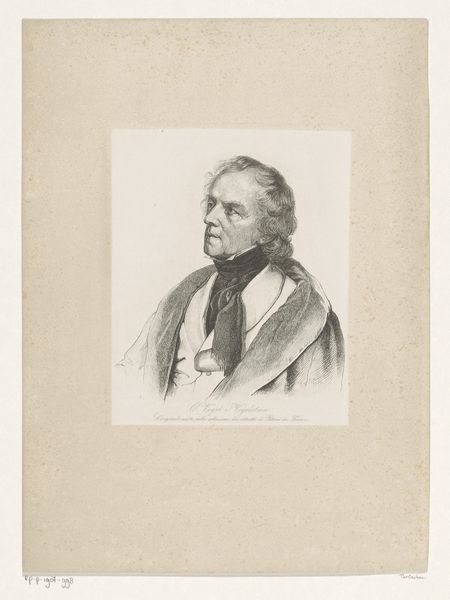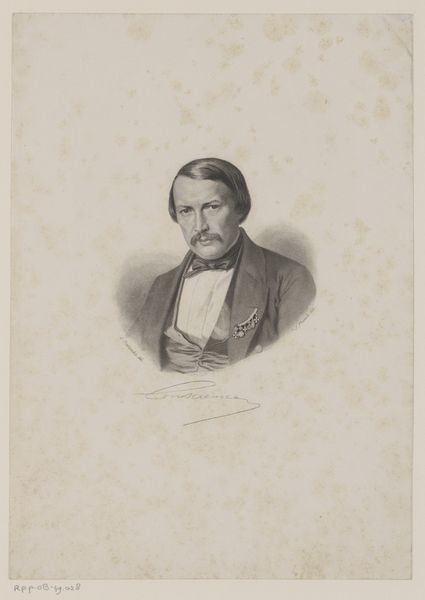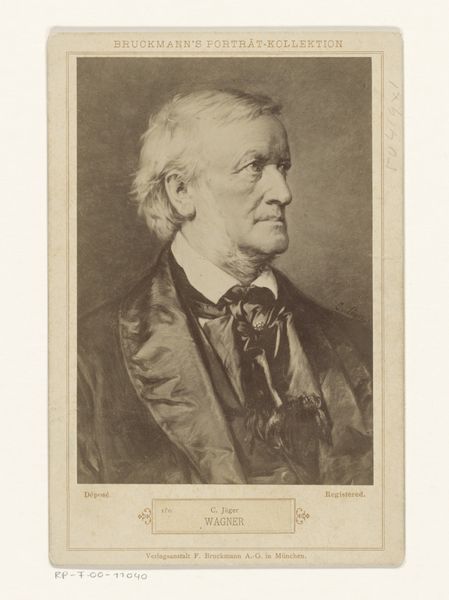
drawing, lithograph, print, paper, pencil, graphite
#
portrait
#
drawing
#
lithograph
# print
#
charcoal drawing
#
paper
#
pencil drawing
#
pencil
#
graphite
#
portrait drawing
#
portrait art
Dimensions: 299 × 227 mm (chine); 424 × 318 mm (sheet)
Copyright: Public Domain
Curator: There’s an arresting quietness to this portrait. The subject's gaze is direct and contemplative, drawing you in instantly. Editor: Indeed. What we’re seeing here is Alphonse Legros’s “Portrait of Professor Huxley,” rendered in 1891. It’s a lithograph on paper, currently held at the Art Institute of Chicago. It’s a striking image of a prominent figure, but do you find the limited palette reflective of its era? Curator: The monochromatic scheme creates a sense of austerity, even severity. It accentuates the subject’s intellectual gravitas, almost hinting at a hidden, deeper wisdom. Editor: Huxley was, of course, a powerful and controversial figure, known as “Darwin’s Bulldog” for his vigorous defense of evolutionary theory. The print humanizes Huxley. One wonders how Legros’ portrait functioned within the intellectual debates raging in the late 19th century, with images often wielded as propaganda. Curator: It's as though the artist is capturing not just a likeness but the very essence of rational thought, made accessible, perhaps to garner support for such "dangerous" ideas? Those long, somewhat mournful eyes express so much—resolve, doubt, the burden of knowledge itself. The symbolic power of portraits shouldn't be overlooked. Editor: Precisely. And this print would have allowed for widespread dissemination, turning the scientist into a symbol of modern thought accessible across society. The choice of lithography also speaks to its function. It’s a relatively inexpensive medium, widening distribution. Curator: I’m struck by how relevant this image remains. The pursuit of knowledge and the challenges to accepted truths feel incredibly timely. What do you take away from seeing it again, knowing his important place in history? Editor: The print demonstrates how intellectual battles are, in part, fought through visual representation, which makes me wonder, in turn, about the place of the intellectual within culture itself, and its visual projection in turn. It's an ongoing project, I suspect.
Comments
No comments
Be the first to comment and join the conversation on the ultimate creative platform.
